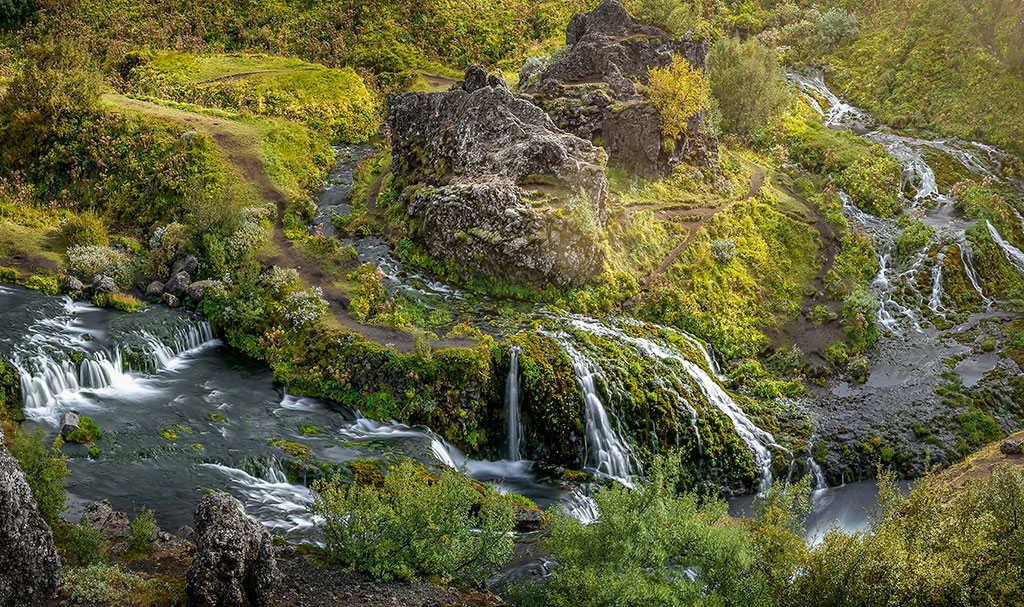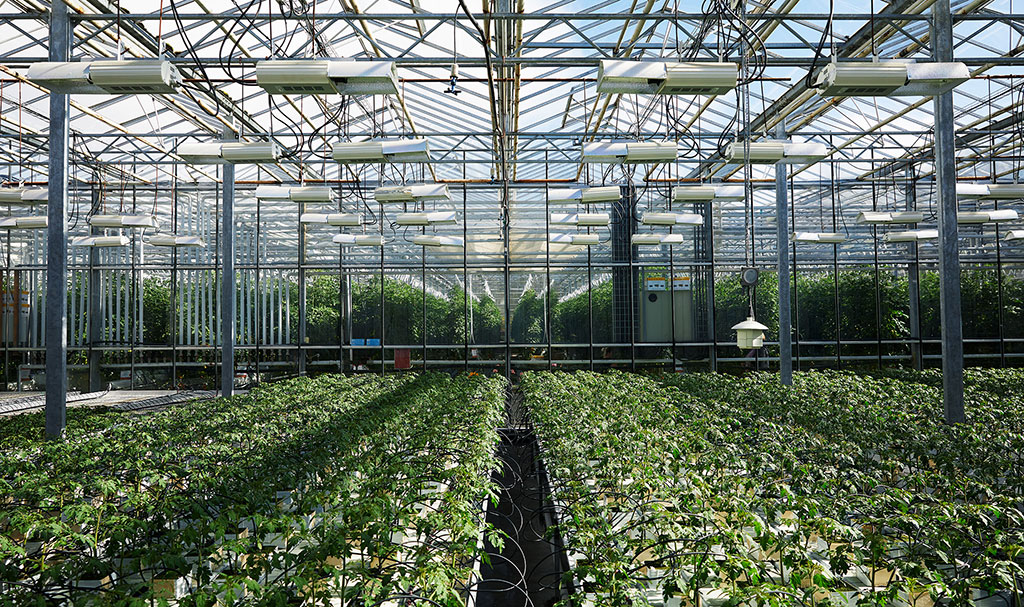Environment

Raw materials
301-1 Materials used by weight or volume
Cleaning
Dagar handles cleaning of just under 30,000 m2 of the Bank’s premises. In 2019, Dagar used 174 litres of cleaning agents and 98% of the agents used are ecolabelled, either by the Nordic Swan or the EU Ecolabel. Dagar has been certified by the Nordic Swan.
In addition to daily cleaning, Dagar handles various special assignments.1 A 120 litres of non-ecolabelled cleaning agents were used in these special assignments.
In addition, 425 kg of sanitary towels were purchased, all ecolabelled, and 1,279 litres of cleaning agents for indoor use, 96% of which was ecolabelled.
Use of paper
The Bank continues to work towards its goal of becoming a paper free bank.
Total paper use in 2019 was 7.15 tonnes, plus envelopes which measured 920 kilos. In 2019, 87% of printed material in the Bank was greyscale and 77% was duplex.2 All paper used was ecolabelled Nordic Swan or EU Ecolabel, as was 96.1% of the envelopes. At year-end, the Bank had 138 printers, down by 34 since 2018. All printing devices are labelled in accordance with German ecolabel Der Blaue Engel.
Printed material
Use of paper in published material amounted to 14.6 tonnes, 12.6 tonnes of which were printed on ecolabelled paper, or 86% of published material. The amount of printed material thus amounts to 112 grams per customer.
All printed material published by Landsbankinn is printed by Nordic Swan ecolabelled printers.
Total paper use per employee and customer was as follows:
- Around 8 kg per full-time equivalent position
- Around 55 gr per customer
1. For 2018, information was not available for special assignments carried out for Landsbankinn by Dagar. In 2018, 13 litres of cleaning agents were used, 76.8% Nordic Swan ecolabelled.
2. The ESG Report for 2018 did not include information on the percentage of greyscale and duplex printing. That year, 88% of printed material was greyscale and 93% was duplex.
Energy
302-1 Energy consumption
Vehicles in use by Landsbankinn at year-end 2019 numbered 19 and total use is estimated at 260,613 km during the year, or an average of 13,716 km per vehicle.
Driven kilometres with taxis in 2019 were 9,370, an 18% reduction from the previous year when 11,432 km were driven in taxis. A total of 1,352 car trips were driven in 2019 as compared with 1,591 in 2018.
Fuel consumption, measured in kWh, has decreased from 247,490 kWh to 218,497 kWh, or by 12% between years. Fuel consumption due to employee driving was as follows:
| Fuel consumption | 2018 | 2019 |
|---|---|---|
| Fossil fuels (dm3) | 17,758 | 15,837 |
| Methane (Nm3) | 7,326 | 6,369 |
Continued reduction in fuel consumption between years has been achieved by switching to electric cards instead of fossil-fuel reliant cars and encouraging use of bicycles and public transport over cars.
302-2 Energy consumption outside of the organization
Electricity consumption
Landsbankinn has access to exhaustive information about use of electricity for 43,019 m² or 91% of total square meters occupied. Electricity consumption was 5,532 MWh for these square metres. The Bank does not have adequate information about electricity use in rented housing where electricity is included in the rent or other operating expenses. Total electricity consumption is estimated at 6,109 MWh, or 129 kWh/m², which is an 11.8% increase from the previous year.
Hot water consumption
Information about hot water consumption is subject to the same limitations as information about electricity use as it is sometimes included in rent or other expenses. Heating utilities state consumption in cubic meters of water but not energy content. This impedes any comparison as water temperatures can vary greatly between areas. This excludes heating utilities in parts of Iceland where geothermal resources are scarce, where water is heated with electricity; there, heating is measured in terms of energy content. This further complicates comparison between heating utilities.
Landsbankinn has information about hot water consumption for 35,490 m², or around 75%, of total square meters occupied. Measured water consumption was just under 167,000 m³, putting estimated average use at 4,7 m³ per total square meters occupied.
YoY reduction in fuel consumption

Emission
305-1-2-3 GHG emissions scope 1, 2, 3
In 2018, Landsbankinn changed its reporting from GRI G4 to GRI Standards. Reporting under 305-1, 305-2 and 305-3 has now been simplified to facilitate year-over-year comparison.
Emission of CO2 equivalents was as follows:
| Emission of CO2 in tonnes | 2018 | 2019 |
|---|---|---|
| Fuel (scope 1) | 49.1 | 43.5 |
| Energy consumption (scope 2) | 44.6 | 53.8 |
| Landfill of waste (scope 3) | 117.7 | 36.9 |
| Air travel (scope 3) | 184.5 | 183.2 |
| Total | 396.0 | 317.4 |
The emission factors of the Environment and Food Agency were used to calculate GHG emissions for 2019. Figures for fuel from the previous year were updated using the same parameters for the sake of comparison since the Environment and Food Agency has altered its emission factors since 2018.
305-4 GHG emissions intensity
GHG emissions amounted to 317.4 tonnes in 2019, which is a 20% decrease from the previous year. Emissions amount to around 355 kg per full-time equivalent position. This equals 154 litres of petrol per FTE. Landsbankinn offset GHG emissions for 2019 with Kolviður. The cost of carbon offsetting emissions in 2019 was ISK 698,280, for the purchase and planting of 3,174 trees. Kolviður’s calculator was used to calculate the offset amount.
305-5 Reduction of GHG emissions
Transportation agreement
The aim of the transportation agreement is to provide employees with more numerous commuting options, allowing them to avail themselves of the transport method best suited to each occasion, to take advantage of eco-friendly modes of transportation yet have access to a car when necessary.
The transportation agreement entails that employees oblige themselves to use other forms of transportation than a private vehicle in 60% of their daily commute. The Bank repays out-of-pocket expenses up to ISK 96,000 per year, or ISK 8,000 in monthly instalments.
At year-end 2019,1 408 employees had active transportation agreements, or 44.1% of all employees. Of the active participants, 58.8% are women and 41.2% men, which corresponds to the gender breakdown of the Bank's employees.
Landsbankinn exchanges all light bulbs with LED lighting when they need replacing and eco-friendly vehicles are purchased when there is any renewal of the Bank’s cars.
Percentage of transportation agreements
1. Information about the transportation agreement was not included in the ESG Report for 2018. That year, there were 408 active agreements at year end. The gender balance was 59.3% women and 40.7% men, which is comparable to the overall gender ratio of employees in 2018.
Effluents and waste
306-2 Waste by type and disposal method
Total waste amounted to 173.2 tonnes in 2019, a 14% reduction from the previous year. 89% of waste was sorted in 2019, up from 68% in 2018. The Bank is working to increase waste sorting in its operation.
Target:
| Waste treatment (in kg) | 2014 | 2015 | 2016 | 2017 | 2018 | 2019 |
|---|---|---|---|---|---|---|
| Mixed waste | 96,940 |
94,118 |
84,943 |
93,353 |
63,837 |
18,317 |
| Sorted | 108,130 |
139,214 |
116,308 |
107,021 |
138,529 |
154,851 |
| Organic | 25,713 |
21,669 |
22,567 |
32,024 |
34,318 |
27,475 |
| Sorted waste | 45,065 |
47,610 |
56,178 |
28,839 |
35,372 |
46,925 |
| Construction materials | 13,740 |
3,120 |
3,750 |
11,940 |
4,880 |
0 |
| Data expunction paper | 22,350 |
60,057 |
32,272 |
25,285 |
62,695 |
74,689 |
| Data expunction | 534 |
6,235 |
1,237 |
8,277 |
1,265 |
5,763 |
| Pollutants | 728 |
522 |
304 |
657 |
0 |
0 |
| Total | 205,070 |
233,332 |
201,251 |
200,374 |
202,366 |
173,168 |